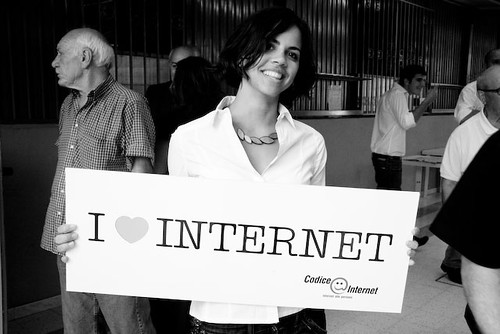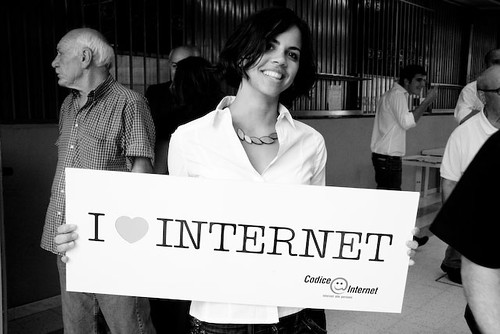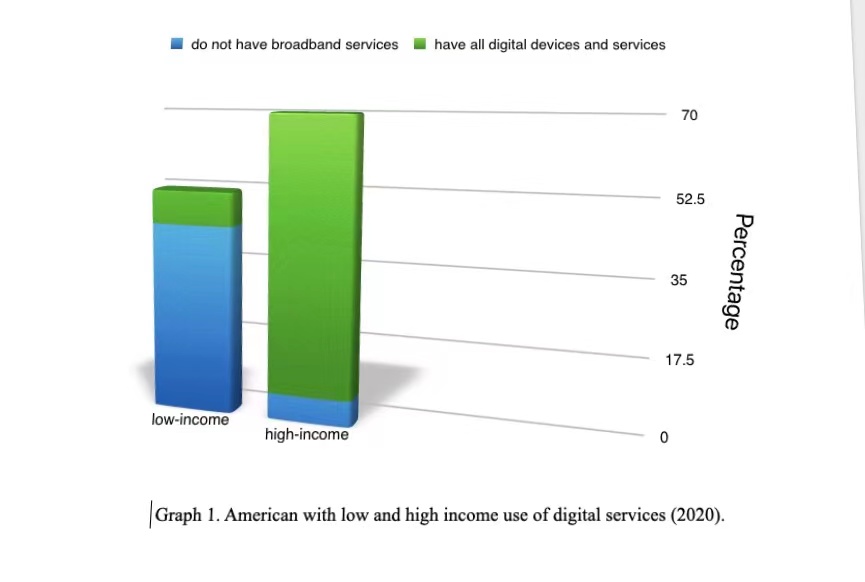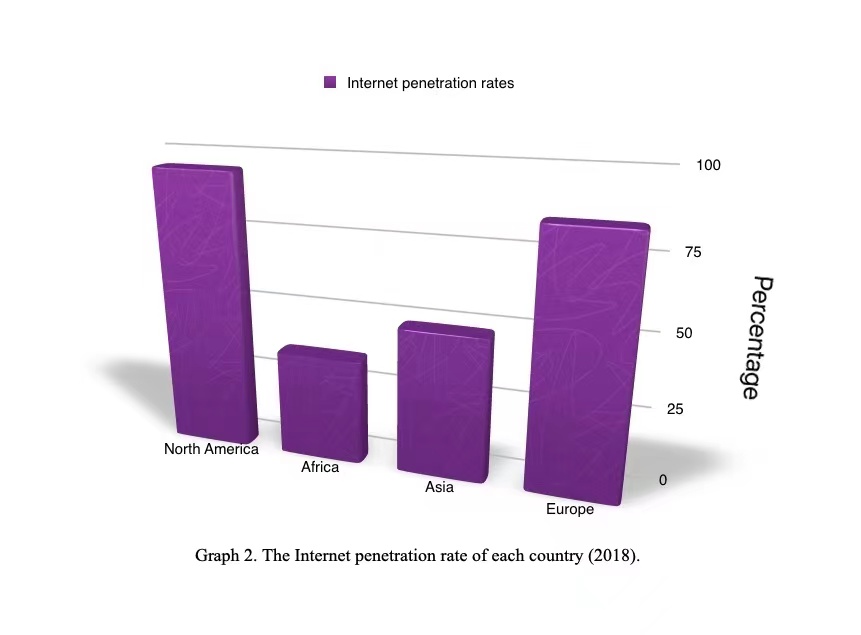

“Settimana Internet @ Roma – 25 giugno, Internet e Anziani” by codiceinternet is licensed under CC BY-SA 2.0
The emergence of the Internet has laid the foundation for the development of computers and communications in the world. The Internet is an information dissemination mechanism, and a medium for collaboration and interaction between individuals and their computers regardless of geographic location that penetrates our daily lives. The Internet is based on the initial prototype of global or Galaxy-based information infrastructure, including global complex operating facilities involving technology, operation, management, and social aspects (Leiner, 1997). Even the ubiquitous visitor population has problems of differentiated use and technological inequality. Some traditional structural inequalities, such as economic class, aging, etc., have hindered the development of the Internet and made an insurmountable gap. However, the development of the Internet has also exacerbated the power of structural inequality, an emerging form of structural inequality, which is reflected in digital assets and non-digital assets within and between countries. Meanwhile, traditional structural inequalities have not been eliminated, but have co-existed with emerging inequalities and become embedded in our living environment.
Economic Class slows the growth of the Internet
The deep-rooted economic divide hinders the popularization of the Internet and the development of a digital world, which includes software, hardware, network access, usage patterns, and the quality of skills (Robinson, 2020). People at the bottom of the economic ladder are more likely to be excluded from partial or full digitalization than those at higher economic ladders because they cannot afford digital equipment and services. For example, according to Pew data, there is a significant digital gap between Americans with low annual incomes and their annual incomes. 44% of low-income Americans do not have broadband services, while 6% of high-income Americans do not have broadband services; 8% of low-income Americans have all these digital devices and services, compared with 64% of high-income Americans (Robinson, 2020). 
Therefore, such a situation shows that low-income people are unable to purchase equipment to access or use the Internet, which has slowed down the popularity of the Internet and its value cannot be displayed. The positive role it plays in our daily life can only be realized by some people,rather than everyone in this world.
Aging causes restrictions on usage patterns and skill quality
The structural inequality of the elderly challenges technical capabilities and technical maintenance. Cognitive abilities, digital skills, and the availability of technical support all affect the percentage of older people using ICT. The major challenges they face include managing passwords, maintaining online security, and understanding the ever-changing ICT interface due to the rapid development of ICT. There are obvious differences in the use, exposure, and influence of ICT among the elderly, compared with young people, especially the possibility of using the Internet, smartphones, and social media for people 65 years and older (Robinson,2020). The aging problem is a challenge to digital development, and it also plays a role in advancing it. The emergence of these problems has prompted digital development to seek easier, faster, and understandable access to the network and methods of use, rather than services that lack the literacy or technical capabilities of this group.
Digital assets and Non-digital
The digital age promoted by network development provides people with access to knowledge. It is generally believed that it can provide opportunities for the poor and reduce inequality, but the results are unsatisfactory. New technologies have been introduced into a society that is far from equal in many interrelated ways (Souter, 2018), and the rich are better at knowing how to use new technologies to facilitate themselves than the poor, create more wealth by themselves which caused more serious structural inequality. The inequality between the poor and the rich is like the digital inequality of various countries around the world. According to 2018 statistics, North America and Europe are at the forefront of technological development, their Internet penetration rates are 95% and 85% respectively, which is a huge gap from the 36% and 49% penetration rates in Africa and Asia shown in the report (Robinson, 2020). There is an example to show the gap between countries that have access to digital technology and that there is not, the average income of people living in North America is 16 times that of people living in sub-Saharan Africa (United Nations, 2020).
 Technology giants
Technology giants
This gap is also due to the dominance of technology giants in the digital age. For example, technology giants such as Facebook and Google have achieved near-monopoly positions in the global market. Facebook accounts for 77% of mobile social traffic, and Google owns 97% of mobile searches (Popiel, 2018 pp570). According to calculations, they together account for 63% of the advertisements market. These technology giants have made inequality between countries worse, and the level of inequality in most countries has risen within these three years.
However, the average income of some developing countries is on the rise, which can be attributed to the growth of emerging economies brought to China and Asia by the digital economy (United Nations, 2020). This is not entirely a piece of good news, because it has led to inequality within the country; income and wealth are increasingly concentrated in the middle and top-class, that is, those groups that can enjoy the benefits of the Internet. The gap between urban and rural areas is growing. In more than half of the 92 countries with data, the bottom 40% of the income is less than 25% of the total income (United Nations, 2020). This shows that the middle and top incomes are fast. Growth drives and exacerbates inequality within countries.
Traditional structural inequality completely disappeared?
‘As we show across multiple contexts, the concept of the digital inequality stack is central to legacy and emergent forms of inequality in the digital age.’(Robinson, 2020)
In fact, the traditional structural inequality still exists and has become more diversified, more serious due to the continuous development and expansion of digital. For instance, software used to warn Nikon users when people filmed people who appeared to blink tended to interpret Asians as blinking all the time (Zhou & Schiebinger, 2018).

Many researchers point out that this is because of artificial intelligence (AI) bias, and one of the main drivers of it is training data that learning tasks are trained on large, annotated datasets. However, the most interesting is the source of these data. The data on ImageNet is the source of the advancement of computer research. Data from the United States accounts for 45% of the world’s population, even though its population accounts for only 4% of the world’s population, while China and India that are 36% of the world’s population have only 3% of the data (Zhou &Schiebinger, 2018). The displayed data shows that data that encodes gender, race, and cultural prejudice may be unintentionally generated, which often reflects the deep and hidden imbalances in institutional infrastructure and social power relations. Then through the spread of artificial intelligence or digital technology, our approach can be seen as spreading this imbalance and deepening structural inequality, rather than using the convenience brought to us by the digital age to eliminate it.
Conclusion
The development of the Internet connects us to a digital era that integrates information and technology. On the surface, every development of it is great progress, we will find that it brings us not only convenience but some Hidden worries. Its development is affected by structural inequality, which at the same time deepens the problem of structural equality and creates new problems. Therefore, the concept of digital inequality has been continuously expanded because new forms of inequality now appear together with traditional legacy inequality.
References
Inequality-Bridging the Divide. The United Nations. https://www.un.org/en/un75/inequality-bridging-divide
Leiner, B. (1997). Brief History of the Internet. Internet Society. https://www.internetsociety.org/internet/history-internet/brief-history-internet/
Robinson, L. (2020). Digital inequalities 2.0: Legacy inequalities in the information age. https://firstmonday.org/ojs/index.php/fm/article/download/10842/9561?inline=1
Souter, D.(2018). Inside the Information Society: ICT’s, the Internet and structural inequality. Association for Progressive Communication. https://www.apc.org/en/blog/inside-information-society-icts-internet-and-structural-inequality
Pawei, P. (2018). The Tech Lobby: Tracing the Contours of New Media Elite Lobbying Power. 11(4), pp566-585. Doi: 10.1093/ccc/tcy027
Zhou, J., Schiebinger, L. (2018). AI can be sexist and racist-it ’s time to make it fair. Nature. https://www.nature.com/articles/d41586-018-05707-8
Emerging and traditional structural inequalities coexist by haichuan Wang is licensed under a Creative Commons Attribution-NonCommercial-ShareAlike 4.0 International License.
